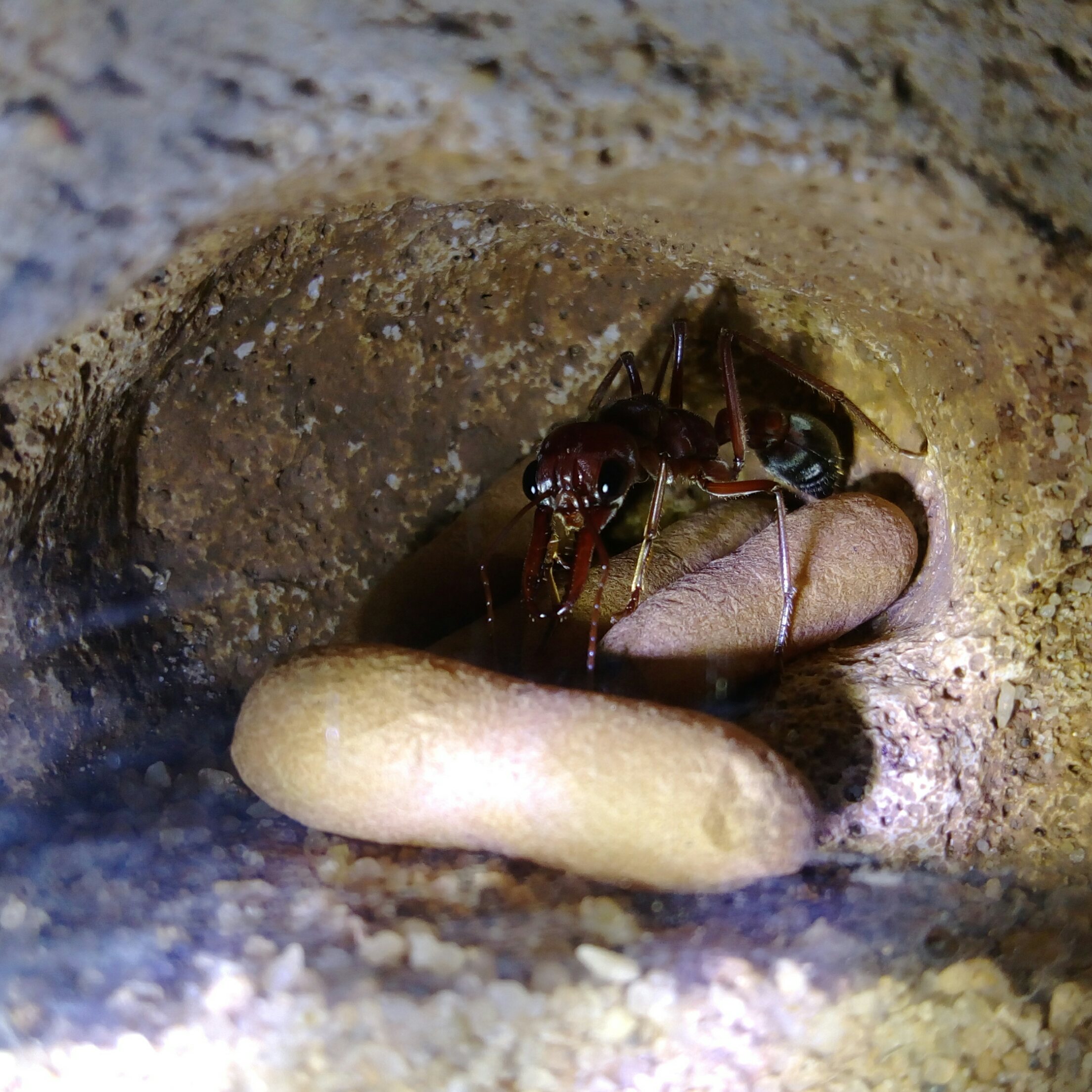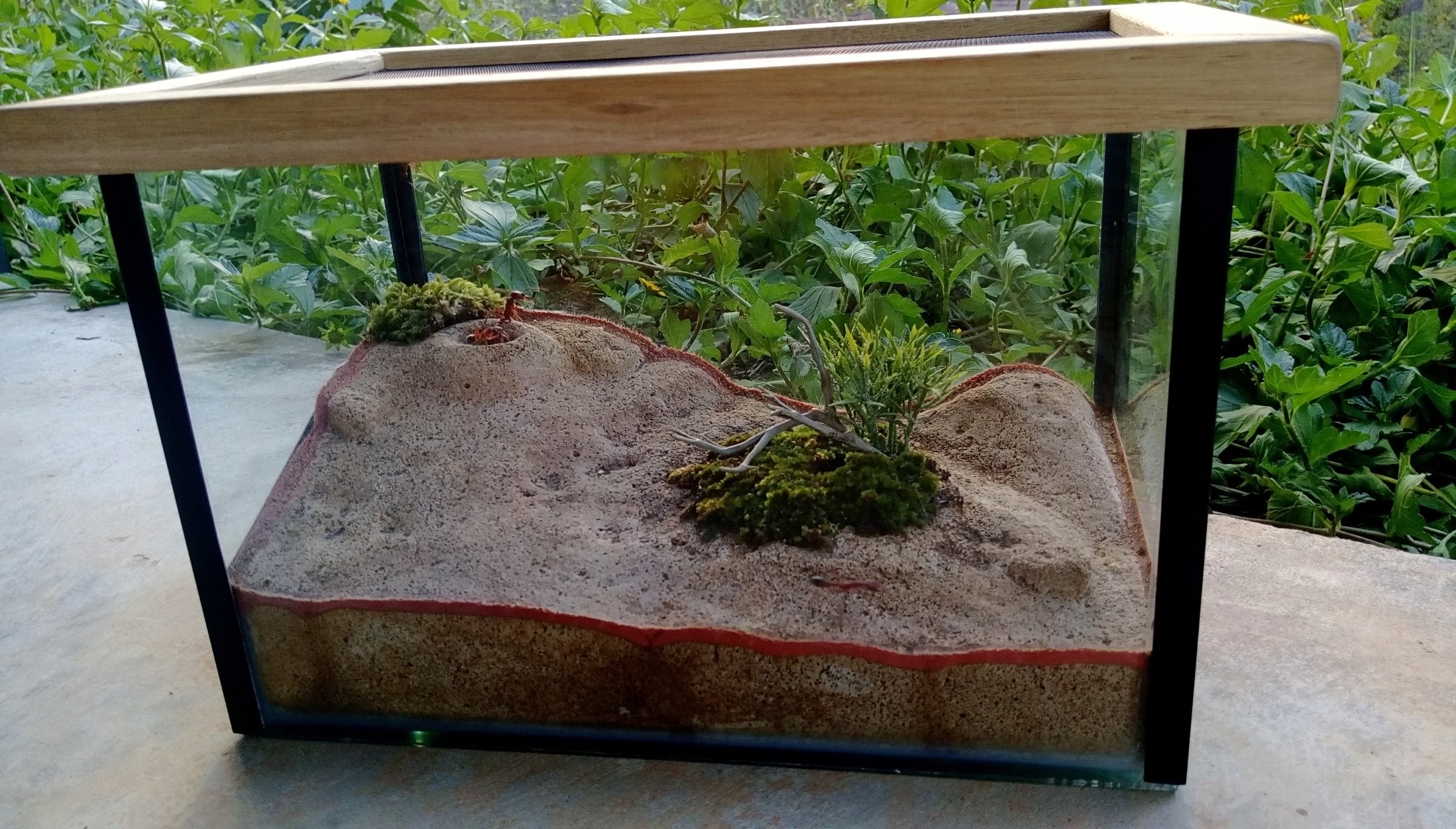The 'Crocodilian' Is Born. The Making Of A Formicarium
We are not alone…. Hidden in plain sight, a civilization far superior in many ways to our own, is busy gathering supplies for the ever growing colony.
I’ve always had an admiration for the obscure. If you take the time to really look closely at things you will realise there is more to our world than meets the eye. I have kept a myriad of weird and wonderful creatures and one of the most enthralling of all would keep me up at night staring into the inner workings of another world. These often overlooked pets are the Australian bull ants.
“I think every household in Australia probably has a small fish tank laying around somewhere on the premises and mine was no different.”
As a youngster I remember bravely messing with what I now know to have been Myrmecia brevinoda nests. I imprinted to memory the way the tunnels were constructed. Within a large mound there would be open areas filled with giant worker ants, connected via narrow passages to yet more open chambers also teeming with ants that would quite clearly be looking me as I poked at their home with a stick from afar. I could only imagine from a distance at what lay deeper beneath the teeming angry masses of red. The thought of being able to see these menacing looking creatures conducting their business clearly, safely, in the comfort of the home, inspired me in my elder years to build a formicarium that could be displayed on a coffee table or in the living room. I imagined what a wonderful treat it would be if I could surgically slice a perfect block of earth from the wild and placed the whole thing inside glass. Instead, my plan was to carve those tunnels from my childhood memory into a block of hebel (That light porous concrete block) from the local hardware. Armed with a hammer, chisel, saw and an old cordless drill with a rusty 10mm bit I ended up sculpting what looked a bit like a crocodile.
“The Crocodilian” was born.
I think every household in Australia probably has a small fish tank laying around somewhere on the premises and mine was no different.
“Containing Myrmecia should never be taken lightly”
These two ingredients would come together to create a nest and outworld area in one. The hebel was coated in a clay slurry to give a natural look and feel. Then sealed in place with an air drying terracotta. The whole thing was then naturally tea stained for colour uniformity. A reservoir had been drilled in with a drown prevention sponge added. Various moss and lichen will turn the whole thing into a mini moss terrarium (complete with ants!). Moss has specific humidity requirements so providing it with everything it needs to survive in theory should make a moist area in the nest and hydrate the ants. The idea is for the moss to take hold and spread across the surface of the hebel. Obviously moss would be out of the question for smaller species of ants, unless you were happy for them to live inside it.
Containing Myrmecia should never be taken lightly and because of this the screen mesh is of the steel variety. The lid frame is of simple wooden construction with foam rubber seals to close any gaps against the glass.
Setting the finished product down with a small group of Myrmecia brevinoda inside for testing. I stood back and it occurred to me. “What if I was to catch the queen of a smaller species.” It might be best to make another.



























